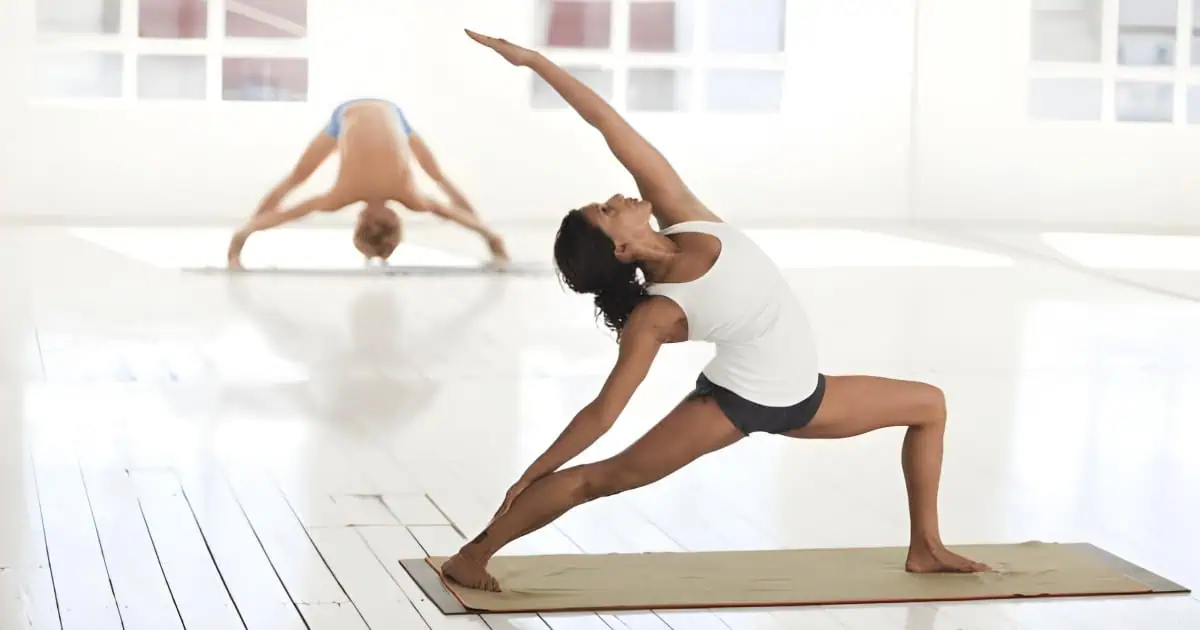Key Takeaway
Yoga asanas are more than just physical postures; they serve as a passage inward to reconnect with your true self.
When I first started practicing yoga, I, like many people, saw complicated yoga poses and thought that’s all there was to it. But after deepening my yoga journey and studying to become a yoga instructor, I realized yoga poses have a deeper purpose beyond looking impressive.
The asanas we practice on the mat, whether in Iyengar or Ashtanga, are just the tip of the iceberg, the first step into the vast world of yoga and meditation.
In this article, I’m sharing what I’ve learned from my 10 years of studying yoga. We’ll explore the history and theory behind the shapes we do on our mats, the importance of asana in yoga practice, and the most common yoga postures you will encounter in a yoga class.
Contents
Understanding Yoga Asana
Asana is a Sanskrit word meaning “posture” or “seat”. Asana, a term integral to hatha yoga, relates to the physical practice of yoga—the postures and movements like the mountain pose we do on the mat.
Modern science studies have confirmed that practicing regular yoga asana has many incredible benefits for the body and mind, including:
- Increased flexibility of muscles
- Increased mobility of joints
- Increased strength
- Improved balance and stability
- Enhanced focus and concentration
Although asana is prominent in all Western yoga classes, in yoga tradition, it is just one small aspect of yoga practice.
Yoga Asana & Eight Limbs
The term yoga asana first appeared in the ancient yogic text, The Yoga Sutras, by Sage Patanjali. This yogic text serves as a fundamental part of medieval Hatha yoga history as it details the method or path a yogi should follow to reach the goal of yoga—enlightenment.
Patanjali details these steps through a system known as the eight limbs of yoga. The eight limbs are foundational to every type of yoga, including Hatha, Ashtanga, and Iyengar practices taught by well-known yogis like Sadhguru.
Asana is the third limb or aspect of yoga practice. According to the yoga sutras, the purpose of asana is to relax the physical body and calm the mind, preparing for the other limbs, such as pranayama (breath work) and meditation.
So, while many modern-day yogis practice asanas to cultivate flexibility or strength, it’s important to note that you’re also setting the stage for meditation and spiritual awakening.
Each yoga asana prepares different body parts for meditation, aligning with the principles of medieval hatha yoga and the yoga sutras. For example, some strengthen the back so we can sit straight without pain during meditation.
Fundamental Yoga Asanas
All the basic asanas from Hatha yoga fit into one of the following four categories. A balanced and thorough yoga practice should include a mix of postures from each category.
Seated Poses
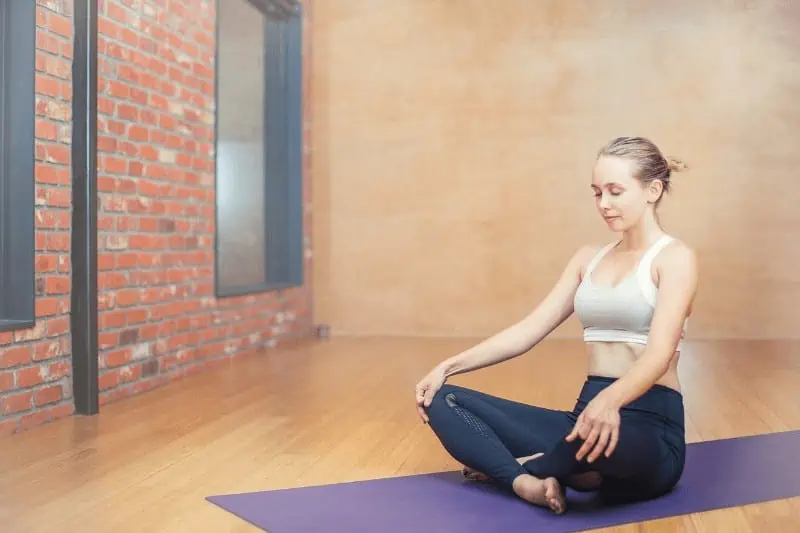
Seated yoga asanas boost flexibility and stability and can be used as warm-up or cool-down poses. They can help improve digestion, spinal health, hip mobility, and more.
Here are some common seated yoga postures you will come across in most types of yoga, from Iyengar to Ashtanga.
- Lotus Pose (Padmasana)
- Staff Pose (Dandasana)
- Bound-angle pose (Baddha Konasana)
- Seated spinal twist (Ardha Matsyendrasana)
- Cow Face Pose (Gomukhasana)
Standing Poses
Standing asanas improve posture and balance while building strength in the lower body, particularly the legs, hips, and knees. These poses also help to stabilize and fortify the joints. As you spread your body weight evenly between the front foot and back foot, standing poses improve core strength and stability.
In some yoga styles, like Vinyasa and Hatha, yoga teachers teach standing poses, or asanas, in a series or sequence. These yoga postures typically make up the middle of a yoga class.
- Mountain pose (Tadasana)
- Warrior I (Virabhadrasana I)
- Warrior II (Virabhadrasana II)
- Reverse Warrior (Viparita Virabhadrasana)
- Extended side angle (Utthita Parsvakonasana)
- Triangle pose (Trikonasana)
Prone Poses
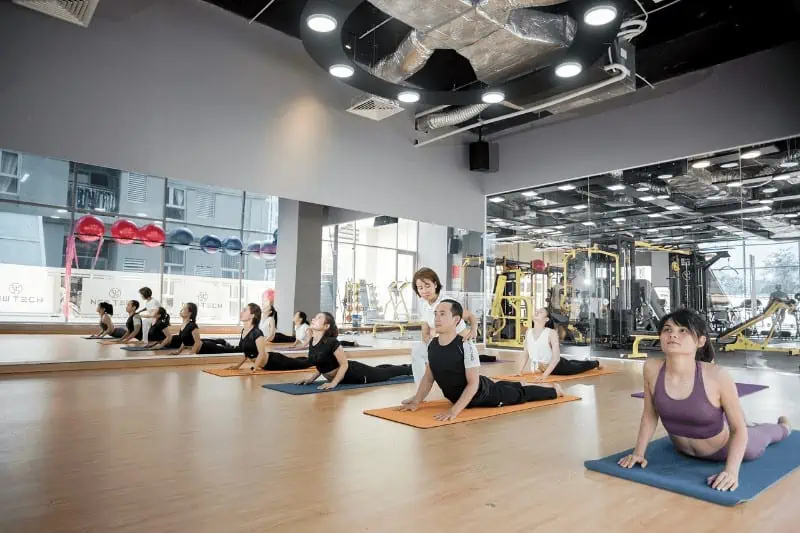
Prone postures are great for strengthening the back muscles and increasing spine flexibility. Many prone poses, like the Cobra pose, open the chest and shoulders while toning the back of the body.
In a yoga class, you can practice these asanas as part of the warm-up, focusing on how they open your hips and ground you to the floor. Alternatively, after completing the standing sequence and your body is warm, you can transition to the floor and practice deeper versions of these asanas.
- Cobra pose (Bhujangasana)
- Locust pose (Shalabhasana)
- Upward-facing dog (Urdhva Mukha Svanasana)
- Bow pose (Dhanurasana)
Supine Poses
Supine asanas (postures performed lying on the floor) prepare you to enter a state of rest at the end of a yoga session.
Savasana is undoubtedly the most crucial supine asana, regulating the nervous system and allowing the physical body to integrate all the benefits of the previous postures.
- Happy baby (Ananda Balasana)
- Bridge pose (Setu Bandha Sarvangasana)
- Reclined hand to big toes pose (Supta Padangusthasana)
- Supine spinal twist (Supta Matsyendrasana))
- Corpse pose (Savasana)
Asanas for Flexibility
Each yoga pose targets specific body parts, improving the range of motion of the joints and the flexibility of the muscles. Whether you want to be able to touch your toes or simply enjoy a nice stretch, here are the best yoga poses for flexibility.
Forward Bends
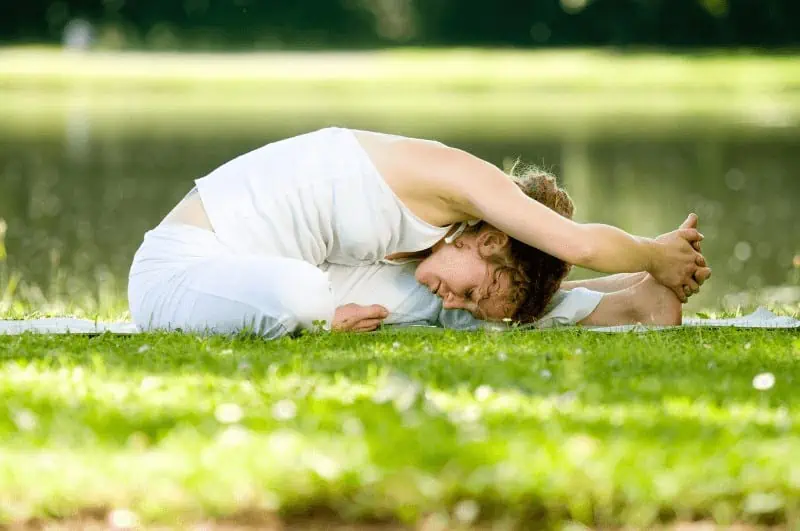
Forward bends lengthen and stretch your hamstrings (thighs) and spine. They can ease lower and upper back pain and improve the hip flexors’ mobility.
Forward folds also serve as a counterpose after an intense backbend, helping to neutralize the spine. While backbends stretch the front body and compress the back, a forward bend has the opposite effect: lengthening the back body and shortening the front.
- Pyramid pose
- Seated forward bend
- Standing forward bend
- Child’s pose
Back Bends
Every backbend helps to open up the chest and shoulders, which makes breathing easier and eases upper back pain and tightness. Doing several sets of backbends can give you energy and warm up the back muscles.
- Camel pose
- Upward-facing dog
- Locust pose
- Cobra pose
- Bow pose
- Bridge pose
- Dancer’s pose
Hip Openers
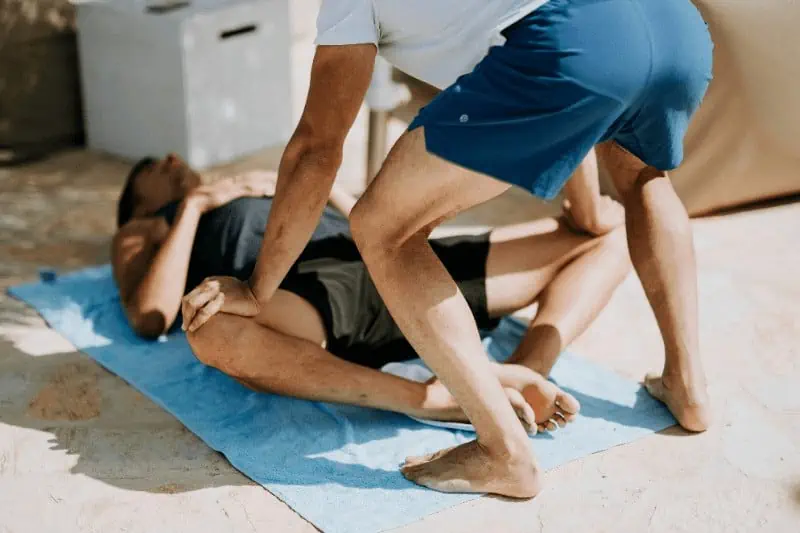
As the name suggests, hip openers stretch and open the muscles of the hips. Hip openers, like the pigeon pose, loosen tight hip flexors, which is a common cause of a sedentary life. Moreover, as many hip openers involve knee flexion, they are great for improving mobility in the knees.
Hip openers can also release stored emotions and promote a sense of letting go.
- Pigeon pose
- Lizard pose
- Bound angle pose
- Squat pose
- Low lunge
Twists
Twists are like a detox for your belly organs. They promote healthy digestion, reduce digestive discomfort, and keep your spine healthy.
- Thread the needle pose
- Seated spinal twist
- Supine twist
Asanas for Strength
A balanced yoga session will have an equal focus on improving flexibility and building strength. While there are many gentle stretches in yoga, several powerful poses enhance muscle tone and mental fortitude.
Arm Balances
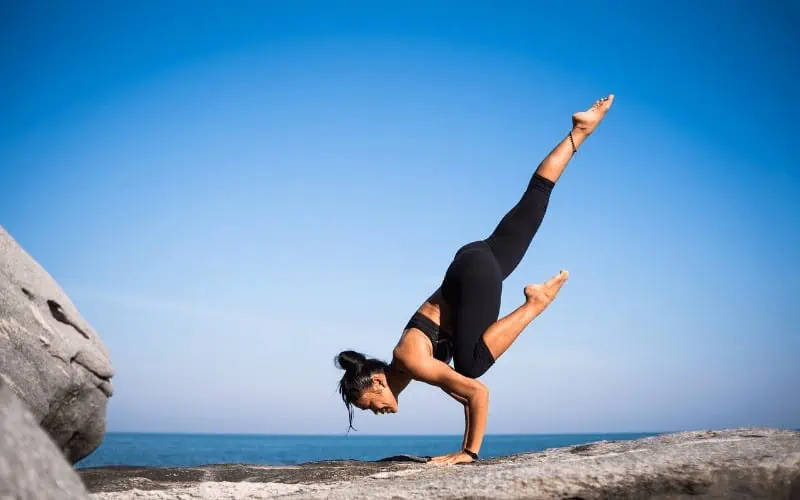
Arm balances build serious upper body strength, toning the arms, shoulder blades, and upper back. As you bring your entire weight onto your palms, they also strengthen your wrists and fingers.
If you’re new to yoga, it is a good idea to ease into arm balances slowly. Start by keeping your feet on the ground to get used to the weight in your hands. Then, slowly lift one foot in the air at a time.
- Crow pose
- Plank pose
- Side Crow
- Forearm stand
Inversions
Turning things upside down can be fun! Inversions like the Headstand reverse blood flow, re-energizing your body and mind. They clear your head, literally giving you a new perspective. However, always remember to stay safe, using a wall or spotter.
- Downward facing dog
- Dolphin pose
- Shoulder stand
- Headstand
Core Strengtheners
A strong core is central to yoga practice. It keeps you stable and supports every move you make. Planks are great for firing up those abdominal muscles, and you can sneak core exercises into almost any transition between poses.
- Sun Salutations
- Plank pose
- Side Plank
- Boat Pose
Balancing Poses
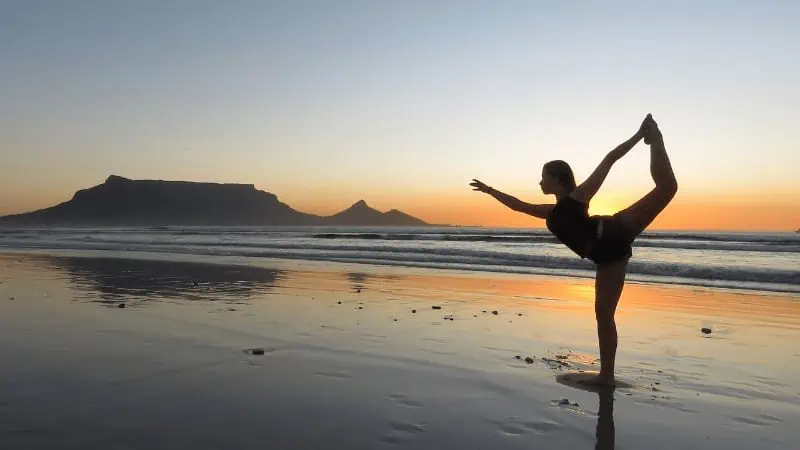
Ever stood on one leg and felt wobbly? That’s where balancing poses come in handy. These postures improve focus, strengthen the ankles, and help you understand your body better.
Many balancing asanas make excellent peak poses, requiring certain body parts, such as the legs and spine, to be thoroughly warm before practicing.
A key thing to remember in balancing poses is that your drishti is key—find a spot to gaze at and keep steady! What’s more, to get an effortless-looking lift-off from your back leg, ensure you spread the weight evenly in your front leg by pressing down all four corners of the foot.
- Tree pose
- Dancer’s pose
- Eagle pose
Preparing for Asana Practice
Asana practice has great importance, preparing us for other spiritual techniques. However, regardless of the type of yoga you practice, preparing for asana is essential. Taking time to set an intention and cultivate proper breathing can genuinely transform your practice.
Setting Intentions
An intention is like a compass for your yoga class. It guides your movements and keeps you focused.
Unlike goals, which are about achieving something specific in the future, intentions are about your focus in the present moment. They shape the quality of your practice from start to finish.
So, before starting your yoga practice, think about what has brought you to your mat today.
For example, an intention could be to cultivate gratitude or patience. This mental focus enriches the experience, making each asana more meaningful.
Practicing Breathwork
Breath control carries significant importance in yoga practice. It’s the bridge that connects your physical practice with your inner self, making yoga much more than a type of exercise.
Techniques like Ujjayi breathing help you concentrate and stay present throughout your asana practice. So, I recommend learning this simple breathing technique and practicing it for a few minutes before you move and stretch.
Ujjayi means “victorious breath.” It involves breathing deeply through the nose with a slight constriction in the back of the throat. This technique adds rhythm to your practice and helps align your breath with movement.
Note that breathwork isn’t just about keeping time during Hatha yoga; it’s essential for all practitioners (and human beings) looking to deepen their connection within themselves and all of life around them.
When you regulate your breath, you control the energy flow in your body, harmonizing your mind, spirit, and asana.
Choosing The Right Equipment
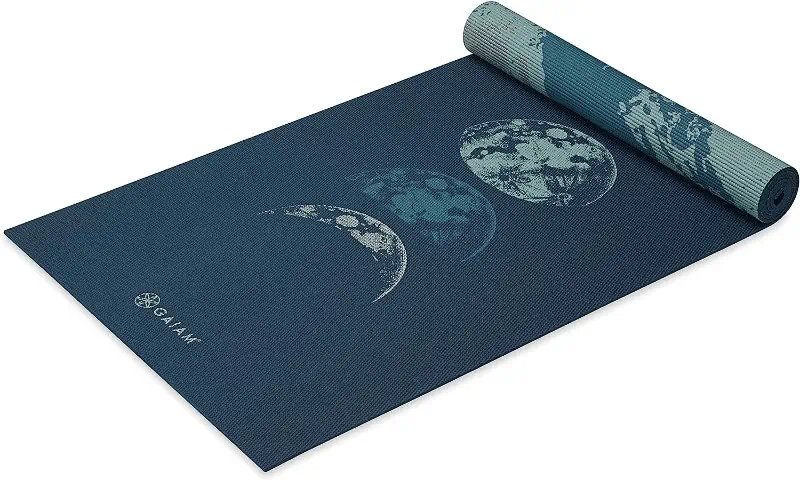
The main thing you’ll need for yoga asana is a yoga mat. As yoga continues to gain popularity worldwide, the selection of yoga mats and equipment keeps growing. So, choosing a yoga mat for your first yoga classes can feel overwhelming.
You can find yoga mats at all price points. If you are trying yoga practice for the first time, choosing a low-cost mat, such as this thick yet lightweight yoga mat by Gaiam, makes sense.

Gaiam Yoga Mat Premium Print Reversible Extra Thick Non Slip Exercise & Fitness Mat for All Types of...
See latest priceOr, if you want the best quality on the market, you can’t go wrong with lululemon’s 5mm mat.

lululemon’s The Mat 5mm Made With FSC™ Rubber
If you decide to practice at home between yoga classes, consider a few low-cost yoga props, such as blocks, a strap, and a bolster.
My Pro Tip For Learning Hatha Yoga
- Don’t eat heavy food for 2-3 hours before a yoga class. Eating light food, such as a piece of fruit, one hour before is generally okay.
- Be bold and ask questions, or seek guidance from yoga teachers. If you do not understand something, interrupting the class to ask a question is always better than guessing and causing an injury.
- Remember to breathe in each pose. In general, you should inhale as you prepare for the posture and then exhale as you move into the pose. Likewise, to move deeper into a position, inhale first and exhale as you move.
- Seek a balance between effort and ease. You should feel your muscles working in every pose, but you shouldn’t experience pain. If a pose feels too intense, modify it or move to your outer edge to experience some ease and comfort.
Conclusion
Now that you have a deeper understanding of the history and theory of yoga asana, what’s next?
Roll out your mat and strike a pose!
But don’t stop here. There are many more asanas than the ones listed above. Learn about the different yoga poses by type, body part, and style here.


